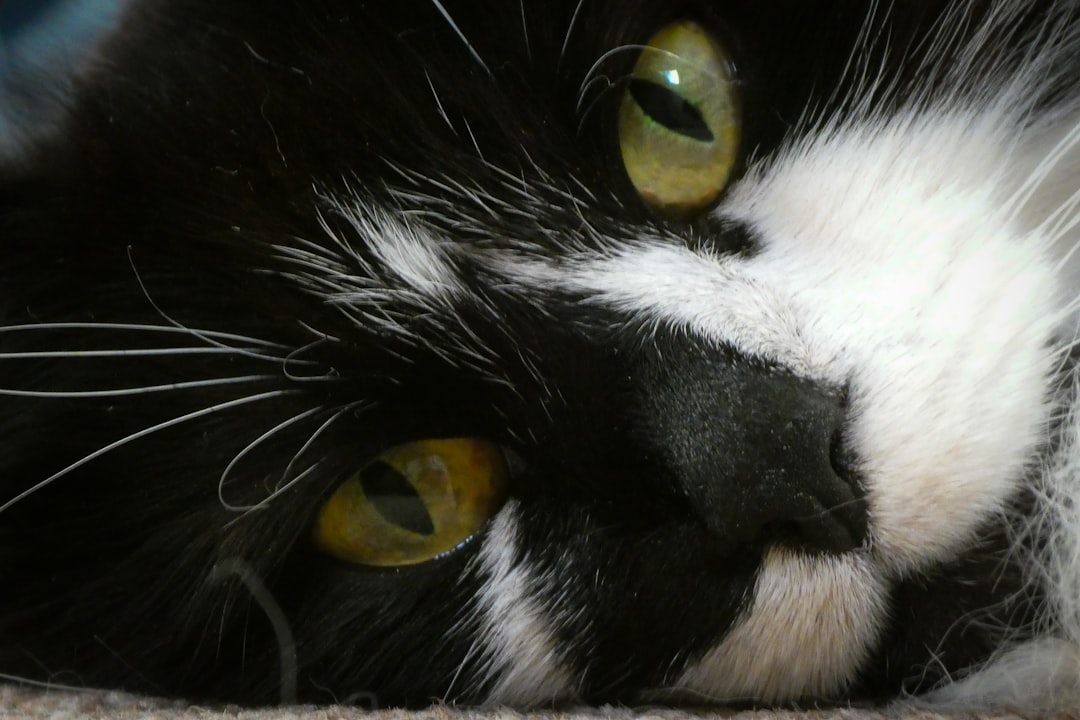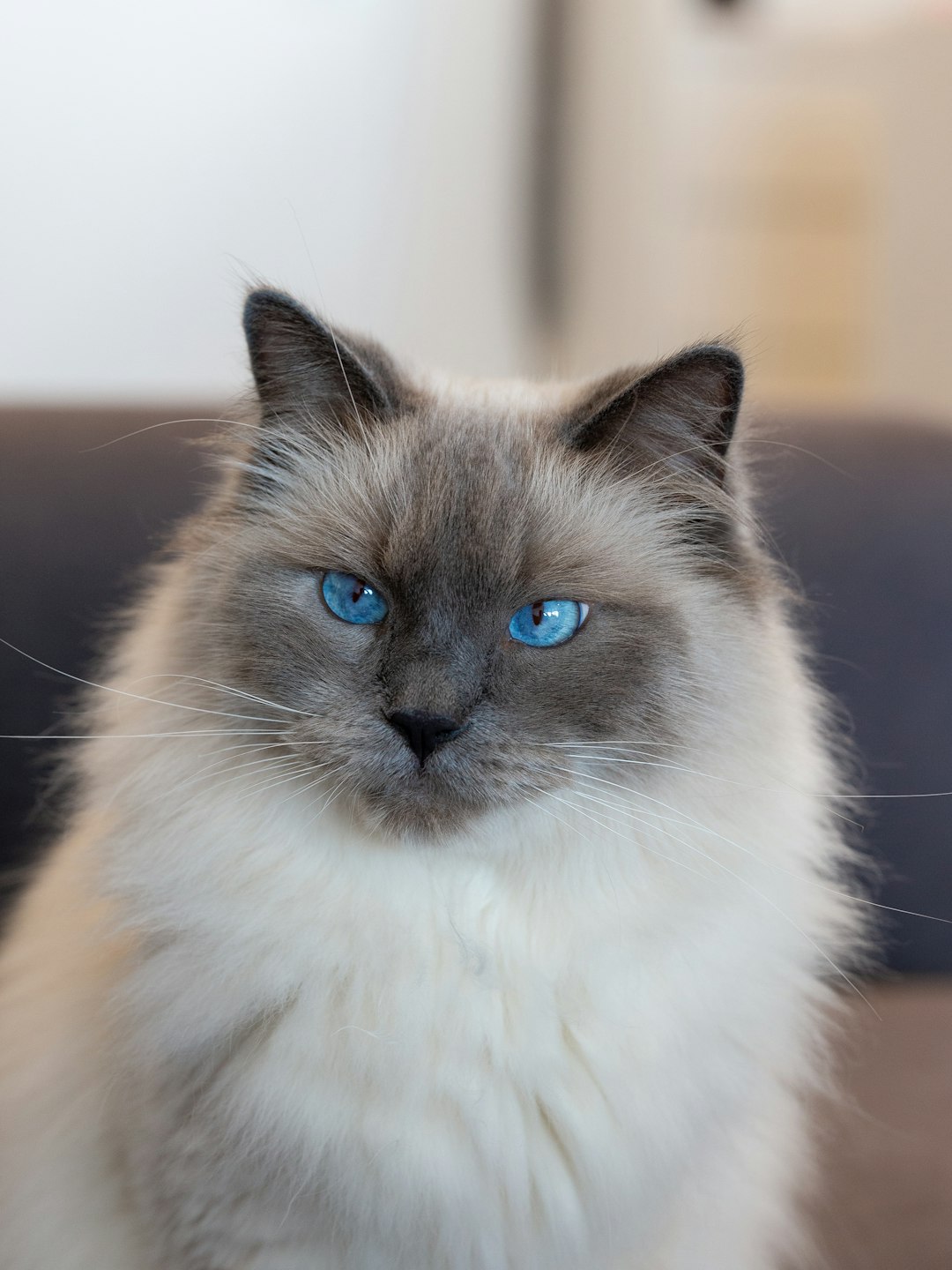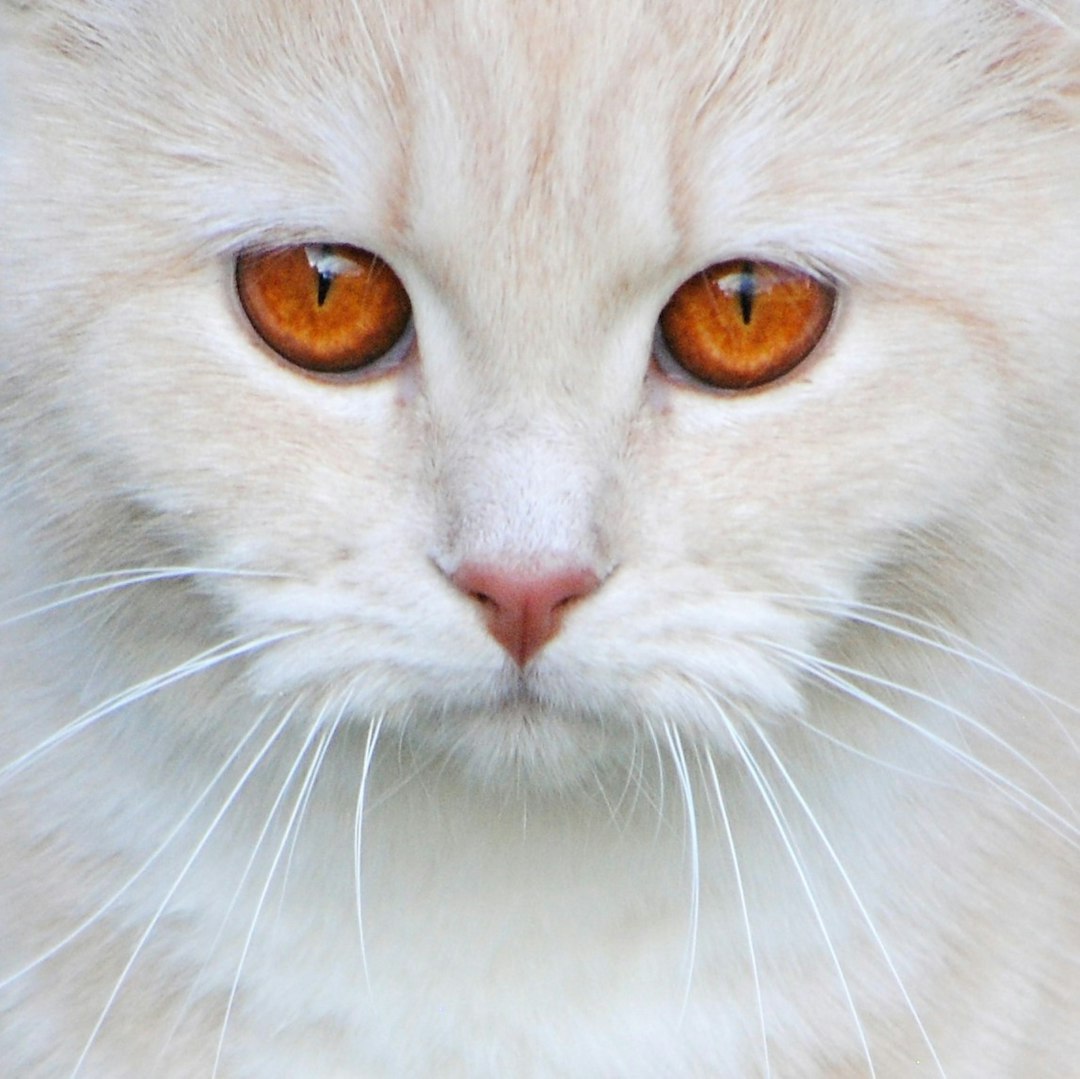If you’ve ever dreamed of having a furry friend that’s as regal as a British monarch, then the British Longhair may just be your purr-fect match. These feline wonders combine stunning beauty with heartwarming companionship, making them the royal companions of the cat world. Just picture this: a fluffy ball of love lounging on your lap, demanding belly rubs like it’s a full-time job. Join us on this whisker-tastic journey as we uncover what makes the British Longhair a must-have for anyone seeking a furry friend. Spoiler alert: it’s not just their impeccable looks!
Origin and History of the British Longhair

Ah, the British Longhair, the fluffy royalty of the feline world! These magnificent creatures hail from the good old UK, where they were once the charming employees of farmers, nabbing vermin and showing those pesky rodents who’s boss.
Here’s a brief timeline of their royal lineage:
- Ancient Times: Cats have been strutting their stuff in Britain since the Roman invasion, bringing with them a bit of long-haired glamour.
- 19th Century: Suddenly, people realized these cats weren’t just cute; they had noble ancestry! Breeders started refining their fluffiness, combining breeds with exquisite qualities.
- Modern Era: Today, the British Longhair rocks a harmonious mix of playfulness and plush fur—perfect for cuddling or strutting around art galleries, pretending to be sophisticated.
In essence, the British Longhair has crafted a legacy of elegance and charm. They’ve gone from working cats to pampered pooches—err, cats! Who knew you could go from “ground control” to “feline supermodel”? Talk about a glow-up!
Physical Characteristics of the British Longhair

Ah, behold the British Longhair! This feline looks like it just stepped off a royal catwalk. With fuzzy tufts of fur that could rival a winter coat, these kitties have a flair for fabulosity. Here’s what you’ll notice at first glance:
- Fluffy Coat: The British Longhair has a gorgeous, dense coat that feels like a fuzzy cloud. Seriously, if you need a new pillow, just give them a pat!
- Round Face: Picture a perfectly round face that could make even the grumpiest cat lovers smile. Those big, expressive eyes could charm the whiskers off a dog!
- Sturdy Build: These cats sport a strong, muscular body, which means they can carry their dazzling personalities with pride.
Comparison Table: British Longhair vs. Other Breeds
| Characteristic | British Longhair | British Shorthair | Persian |
|---|---|---|---|
| Coat Length | Long | Short | Long |
| Face Shape | Round | Round | Flat |
| Playfulness | Moderate | Low | Low |
| Grooming Needs | Moderate to High | Low | High |
If you’re looking for a furry friend who combines beauty and a dose of charm, the British Longhair is the purr-fect choice! Just don’t be surprised if they steal your heart (and your spot on the couch).
Personality Traits and Behavior

Ah, the British Longhair – not just a pretty face! Let’s dive into the quirky, charming, and sometimes downright hilarious personality traits that make this breed an absolute gem of a companion:
- Laid-back Lounger: If you want a cat that could win an Olympic medal in lounging, look no further! The British Longhair enjoys life at a leisurely pace, making them perfect couch buddies.
- Affectionate Yet Independent: These cats love their humans but also cherish their “me-time.” Think of them as friendly roommates who occasionally vanish into their own world (probably plotting world domination, or just napping).
- Intelligent Shenanigans: British Longhairs are like furry Einsteins, solving the mystery of how to open cabinets and hide treats. They keep their humans entertained with their clever antics.
- Playful but Not Overwhelming: While they enjoy a good chase after a feather toy, they won’t be knocking your priceless porcelain off the shelf in an effort to get your attention.
In short, the British Longhair combines a cozy personality with playful instincts, serving up companionship with a sprinkle of sass. Who could resist that?
Grooming and Care Requirements
Alright, folks, let’s dive into the glamorous world of grooming your British Longhair! Owning one of these fluffy felines is like being a hairstylist for a celebrity—strutting their stuff with that luxurious coat deserves a bit of pampering. So, what’s on the grooming agenda? Here’s the scoop:
- Brushing: Aim for 2-3 times a week. Imagine untangling a ball of yarn—just a little patience, and your British Longhair will thank you with purrs!
- Bathing: A bath every 4-6 months should suffice unless they decide to win an award for rolling in mud. (Spoiler: they probably will.)
- Nail Trimming: Don’t be the owner of an accidental cat clawing incident. Trim those nails every couple of weeks!
- Ear Cleaning: Check those ears once a month—no one wants a fluffed-as-a-cloud British Longhair with dirty ears, do they?
- Dental Care: Invest in cat-friendly toothpaste and brush their little teeth regularly to keep that dazzling smile intact.
In conclusion, grooming a British Longhair may look like a chore, but it’s really just a way to bond and keep your fluffy buddy’s aesthetics…ahem…”purr-fect!”
Health Considerations for British Longhairs
When it comes to the fabulous British Longhair, keeping them healthy is essential—after all, a happy cat means happy humans! Here are some key health considerations to ponder, preferably while snuggling your furry friend:
- Weight Watchers: These fluffy beauties love their snacks. Keep an eye on their waistlines, or you might end up with a British Longhair resembling a fluffy bowling ball!
- Dental Dilemmas: Regular tooth brushing can prevent the dreaded kitty breath. Trust me, your nose will thank you!
- Grooming Goals: Their luscious fur is a sight to behold but requires some TLC. Brush them regularly to prevent matting and to keep their coat stunning.
- Regular Check-Ups: Routine vet visits can help catch any sneaky health issues before they become a catastrophe. Think of it as a spa day for your cat—minus the cucumber slices over the eyes!
So, to sum up, with a little attention to their health, your British Longhair will not only be beautiful but a long-lasting furry companion!
Choosing the Right British Longhair
Choosing a British Longhair is like picking a partner for a three-legged race—you need compatibility, charm, and a little humor! Here are some tips to help you find your perfect fluffy buddy:
- Adoption vs. Breeding: Consider whether you want to rescue a lovely little furball from a shelter or if you prefer a brand-new baby from a breeder. Remember, every British Longhair deserves a loving home!
- Coat Colors: British Longhairs come in a fabulous array of colors. From mystifying blues that are cooler than your ex to chic creams that scream, “I’m fabulous!” Look for a hue that matches your home décor—and your fabulous personality.
- Body Type: These kitties are usually big, stocky, and absolutely purrfect! Keep an eye out for kittens with sturdy builds—because nobody wants a long-haired diva who can’t keep up with the fun.
- Personality Match: Pay attention to their behavior. Some may bask in the spotlight, while others enjoy more of a chill, Netflix-and-nap vibe. Choose a British Longhair whose personality vibes with yours—because no one wants a cat that steals the show during dinner parties!
By weighing these factors, you’ll be well on your way to finding a British Longhair that fits like a glove—or should we say, like a cozy, fluffy blanket?
The British Longhair in Popular Culture
Ah, the glamorous life of a British Longhair! These charming furballs don’t just lounge around looking cute; they’ve also waltzed their way into popular culture like the true aristocrats they are. So, how have these fluffy divas made their mark? Let’s take a peek:
- Movies & Cartoons: Ever spotted a British Longhair making a cameo in a film? Their plushness makes them a purr-fect choice for animated features and family films. Honestly, can you blame the casting directors? Just look at that fluff!
- Social Media Influencers: Forget your average human influencers! These cats have taken over Instagram and TikTok, boasting millions of followers with their adorable antics. Who wouldn’t want a daily dose of a British Longhair trying to fit into a shoebox?
- Merchandise Galore: From plush toys to themed mugs, the British Longhair has a merchandise line that’s vast enough to rival any superhero! You’ll find T-shirts emblazoned with plush kitties saying, “I run this house!”
So there you have it! The British Longhair isn’t just a household name; it’s a feline phenomenon that’s taken the world by storm—with fur flying and laughter trailing behind!
The British Longhair in Popular Culture
Ah, the British Longhair! This charming feline has purred its way into the hearts of many—both in real life and on screen! While they might not have the same stardom as the infamous Grumpy Cat, these delightful fluffballs still know how to steal the show. Here’s a light-hearted look at their presence in popular culture:
- Movies: Think of the British Longhair as the classy sidekick in cinema. Their luxurious coats often grace screen settings where elegance and poise are paramount. Watch out for those moments of cat-astrophic comedy!
- Books: Countless children’s books feature British Longhairs as wise guides or mischievous companions, captivating young readers with their enchanting personalities.
- Internet Fame: Social media can’t get enough of British Longhairs! Expect endless cute compilations showcasing their antics—like the “What are you looking at?” stare that turns into an adorable loaf when they flop over.
So, whether they’re lounging as the star of a heartwarming tale or just being their fabulously fluffy selves, the British Longhair proves that they are not just a pretty face—they’re a cultural phenomenon!
Frequently Asked Questions
What on earth is a British Longhair? Is it a myth or a magnificent feline?
The British Longhair is indeed a magnificent feline, not a myth crafted by cat enthusiasts in secret laboratories! Think of it as the fluffy cousin of the British Shorthair, with a coat so luxurious, it could make even a cashmere sweater feel inadequate. Sporting a face that looks like it just emerged from a catnip spa day, this breed is a perfect blend of beauty, size, and personality. It’s like the royal family of cats, but with a penchant for cuddles instead of crowns!
How much time should I spend brushing my British Longhair? I don’t want to turn into a full-time groomer!
Ah, the grooming conundrum! Fear not, aspiring cat servant! While the British Longhair sports a beautiful, plush coat that may seem like it needs daily spa sessions, a good brush two to three times a week should keep them looking like the regal fluffballs they are. Just remember, you’re not training for the Olympic brushing team! A little bit of effort goes a long way, and it just gives you a perfect excuse to bond over hairballs and the occasional cat conspiracy.
Do British Longhairs require specific diets, or can they just eat whatever they find in the fridge?
While your British Longhair might love the idea of raiding the fridge for leftover pizza, it’s best to keep the gourmet takeout for yourself! They do best on a balanced diet formulated for cats, rich in proteins to maintain their majestic physiques—because we don’t want them turning into fluffballs that roll around like oversized furballs. A high-quality cat food tailored to their needs should keep them satisfied and healthy, so save the fridge raids for movie nights with you!
Are British Longhairs good with kids and other pets, or should I keep them in a cat fortress?
No need for the cat fortress just yet! British Longhairs are known for their sweet disposition, making them fabulous family members. They often enjoy the company of children and can coexist well with other pets. They treat life like a cozy family reunion rather than a wild catnip party! However, like any royal dignitary, they appreciate a little personal space now and then. So, ensure those kids and other pets understand the fine art of ‘ask before you pet’ to maintain harmony!



